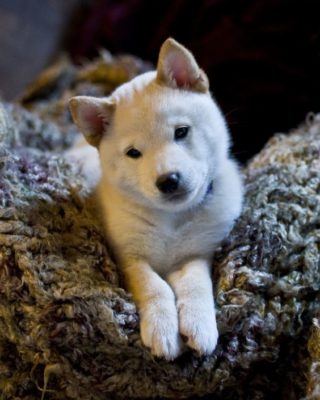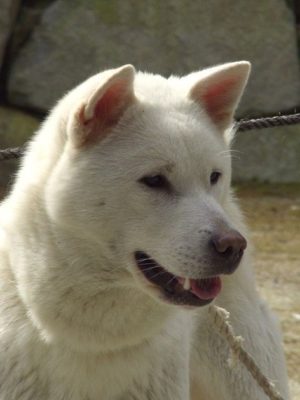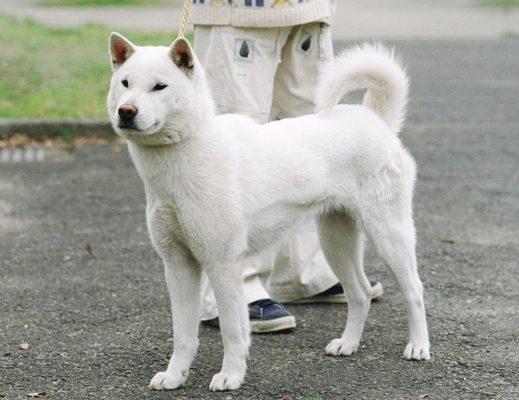Kishu

Like most Japanese dogs, the Kishu is characterized by equanimity, poise, and calm. They take their coolness and self-confidence from their Japanese owners. Not talkative; no one can make them bark for no reason. Distrustful but not aggressive toward strangers, will not attack people first. The instinct of a born hunter is inborn and well-developed.
Table of Contents
Breed Information
| Another Name | Kishu-Ken, Kishu-Inu |
| Origin | Japan |
| Height | Males 52-55 cm Females 49-52 cm |
| Weight | 13-27 kg |
| Fur | Short |
| Color | White, red, sesame |
| Lifespan | 10-15 years |
| FCI Classification | Spitz and primitive types |
| Group | Hunting dogs |
| Price | From $400 |
Breed Photos
Origin History
The snow-white Japanese dog Kishu (or Kishu-Inu, Kishu-Ken) is a very rare and ancient breed. In the Land of the Rising Sun, dogs are traditionally named after the places where they originated; Kishu is no exception. It is declared a national treasure at home in Japan and has been protected by the state since 1934. There is a great legend about the emergence of the very first Kishu, which stood at the origins of its kind. A hunter rescued and helped a wounded she-wolf survive, and in return, he asked for one pup from her litter. The wolf cub, raised by a human, became the progenitor of all Kishu.
Appearance
The Kishu-Inu is sturdy and stocky, yet harmonious and balanced. The owner of the physique with developed muscles. Her back is straight, her chest is deep, and her abdomen is taut.
The head of the Kishu is wedge-shaped, the ears are triangular, sticking upward. The coat is short and double-protected from the cold, with elongated strands on the cheeks and tail. The white, sesame, or red coloring complements the noble posture and graceful movements and gives a true Japanese dog.
Character
Like most Japanese dogs, the Kishu is characterized by equanimity, poise, and calm. They take their coolness and self-confidence from their Japanese owners. Not talkative; no one can make them bark for no reason. Distrustful but not aggressive toward strangers, will not attack people first. The instinct of a born hunter is inborn and well-developed. Cunning and quick-witted, it’s all about the Kishu Inu. Endowed with a variety of talents: they have no problem overpowering a wild boar and catching fish for supper and help drive a flock of sheep. Earning their trust is not an easy task, but the result will surpass all expectations; you won’t find a more loyal dog.
Care
Kishu can adapt to any habitat, easily tolerate the cold and feel at ease in rocky terrain. Claw trimming is a must and regular procedure; otherwise, get ready for a scratched floor and a striped couch. Bathing depends on how dirty the Kishu Inu is; frequent washing can lead to dermatitis.
The kitty changes its coat twice a year; try not to miss these periods. Otherwise, you’ll have to untangle and comb out the tangles; then, a haircut is shown. Coexistence with cats and rodents can have a sad story because Kishu’s passion for hunting does not leave her even in the apartment, and one day you can miss one of the pets, be vigilant.
Training
The path to successful training for the owner of the Kishu is thorny and not a short one. They are not easy pupils with a complex and willful character. Only an experienced dog trainer or regular training with a dog handler can tame and calm their stubbornness. By persistent training and persistence, you can prove your dog its authority and subdue it without causing any physical or mental injuries. The kitty, like air, needs long-distance running, long bike rides, hiking, large physical activities; this way, they satisfy their hunting instincts in urban conditions.
Common Diseases
Kishu has mountain health and is not looking for vet appointments. They are prone to skin diseases and have frequent ear problems. Avoid infection with regular basic grooming for your dog. Can watch the world from a mountaintop height for up to 15 years.
Nutrition
Kishu is not fussy about food. The dog’s diet consists of fish, dairy products, and meat. Natural foods will be ideal for the Kishu Inu. It is advisable to feed twice a day and carefully monitor the number of calories. Overeating should not be allowed; offer the moderate dog portions. Provide free access to clean drinking water. You should start your dog’s morning with cottage cheese and replace vegetables with dietary cereals for joints and cartilage’s smooth functioning.
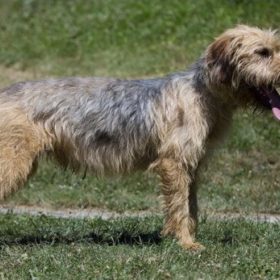 Barak
Barak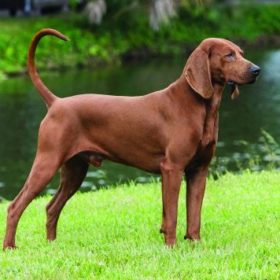 Redbone Coonhound
Redbone Coonhound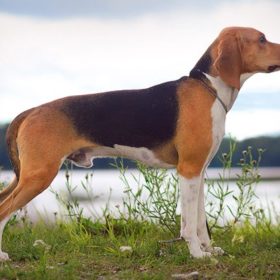 Estonian Hound
Estonian Hound Small Swiss Hound
Small Swiss Hound Petit Bleu de Gascogne
Petit Bleu de Gascogne Shar Pei
Shar Pei